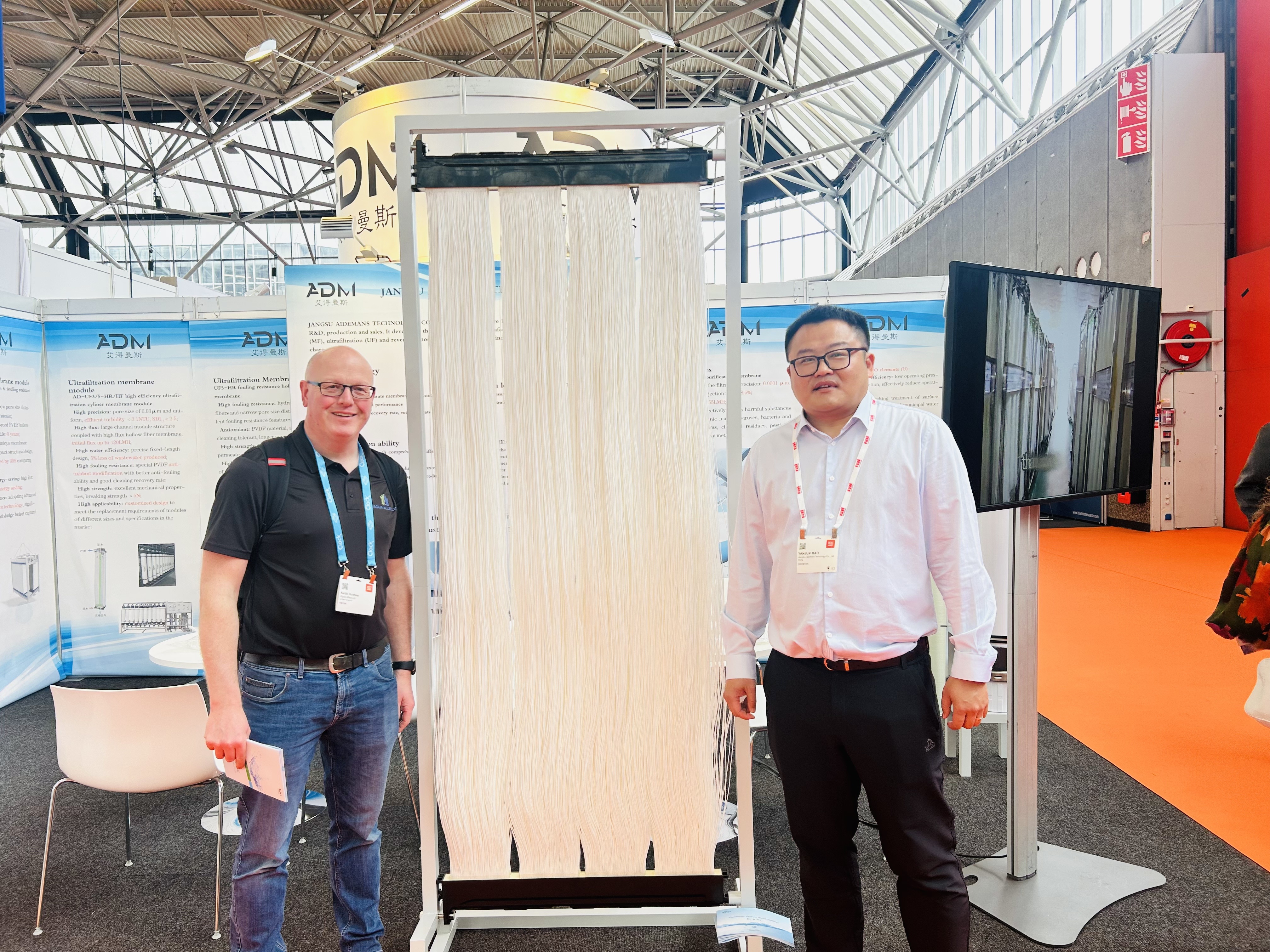Reverse osmosis membrane design principles
Release time:
2025-06-06
Reverse osmosis membrane (RO membrane) is a highly efficient water treatment technology widely used in seawater desalination, industrial wastewater treatment, and drinking water purification. Its design principle is based on the phenomenon of reverse osmosis, where external pressure is applied to force water molecules through a semi-permeable membrane from a high-concentration solution (such as saltwater) to a low-concentration solution, thereby separating the solute from the solvent.
I. Basic Principles of Reverse Osmosis Membrane
The core principle of a reverse osmosis membrane is "selective permeability." The membrane material has a microporous structure with pore sizes typically between 0.1 and 1 nanometer, allowing water molecules (approximately 0.28 nanometers in diameter) to pass through while blocking larger molecules or particles such as dissolved salt ions, organic matter, and bacteria. When external pressure higher than the osmotic pressure is applied to one side of the membrane, water molecules are forced to pass through the membrane from the high-concentration solution (such as saltwater) into the low-concentration solution (such as freshwater), thereby achieving water purification and separation.
II. Material Selection for Reverse Osmosis Membranes
The material of the reverse osmosis membrane directly affects its performance and service life. Currently, the commonly used membrane materials mainly include the following categories:
Cellulose Acetate (CA)
Cellulose acetate was the main material for early reverse osmosis membranes. It has good hydrophilicity and anti-fouling properties, but its chemical resistance and mechanical strength are poor, and it is easily degraded by microorganisms.
Polyamide (PA)
Polyamide is currently the most widely used reverse osmosis membrane material, with high selectivity, high flux, and good chemical stability. Polyamide membranes are usually prepared by interfacial polymerization to form an ultra-thin active layer to achieve efficient separation.
Polysulfone (PSF) and Polyethersulfone (PES)
These materials are usually used as the support layer for reverse osmosis membranes, with excellent mechanical strength and chemical stability, but their hydrophilicity is poor and requires further modification to improve performance.
The Physical Game between Natural Osmosis and Reverse Osmosis
Natural osmosis refers to the spontaneous flow of water molecules from the low-concentration side to the high-concentration side across a semi-permeable membrane when a concentration difference exists between the two sides, until the concentrations on both sides reach equilibrium. The pressure generated by the difference in liquid levels in this process is called osmotic pressure. The osmotic pressure π of a dilute solution can be calculated using the formula π = iCRT, where i represents the number of ions generated by the ionization of solute molecules, C is the molar concentration of the solute, R is the molar gas constant, and T is the absolute temperature.
Solution-Diffusion Model
This model assumes that the membrane is a non-porous homogeneous structure, where the solute and solvent are transferred within the membrane through dissolution and diffusion processes. The specific transfer process is as follows:
Dissolution: Water molecules and solutes are first adsorbed and dissolved into the membrane material at the membrane surface.
Diffusion: Driven by the chemical potential gradient (i.e., pressure difference), water molecules preferentially diffuse through the membrane material.
Desorption: The diffused water molecules are released on the other side of the membrane, becoming pure water.
Jiangsu Aidemans Technology Co., Ltd. focuses on R&D, production, and sales of fine ultrafiltration membranes and zero-discharge reverse osmosis membrane products in the field of industrial zero-discharge. The company's main products include ultrafiltration membranes, membrane modules, reverse osmosis membranes, microfiltration membranes, and membrane fibers. Adhering to a development strategy of "resource regeneration and green low carbon," the company supports the reuse of valuable materials in industrial zero-discharge, reduces carbon, nitrogen, and phosphorus emissions, focuses on challenging technologies, and tackles high-barrier markets, striving to become a specialized, refined, and unique enterprise.
Related Content

